Hose Tips & Safety :
Safety Checklist when Installing Valves and Mounting Hardware

External physical abuse:
Avoid the following situations:
Tensile loads or Side loads
Flattening Abrasion
Thread Damage Kinking
Twisting
Damage to sealing surfaces |

|
Swivel-type adapters:
Swivel adapters do not transfer torque to the adapter when being fastened and allows for bent tubes to be installed without rotating the tube. Always use two wrenches for tightening swivelt adapters. |
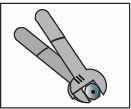
|
Clamps & vibration:
Use clamps to support heavy hose & tube assemblies from vibration, pulling or fatiguing. Caution: clamps used in such applications, could cause abrasion to hose & tube. |

|
Minimum bend radius:
Avoid tight bends in hoses as it may cause leaking, rupturing or premature failure. Hose life could be reduced if the bend radius is too small. |
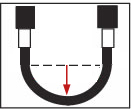
|
Elbows and adapters:
Use elbows and adapters to ensure the minimum bend radius is maintained. |
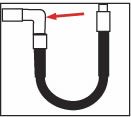
|
Hose lengths:
Excessive hose length, can increase the pressure drop which can affect overall system performance.
|
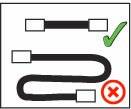
|
Hose length due to pressure:
Under extreme pressure, hoses can expand in diameter and shorten in length. Ensure hoses have enough room for the expansion and retreaction which could occur in extreme pressure applications. |

|
Bend in only one plane to avoid twisting:
To avoid twisting, ensure that the hose is only able to bend in one plane.
|
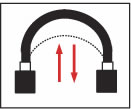
|
Prevent hose bending in more than two planes:
Use a hose clamp to secure longer hoses to prevent bending in more than one plane. |
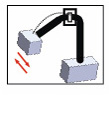
|
Component inspection:
Prior to and after installation, visually inspect the product to ensure there are no physical defects that could compromise performance or safety.
|

|
|
Fluid injections:
Fine streams of fluid escaping from pressurized systems can penetrate skin causing personal injury and tissue damage. Seek expert medical attention immediately.
|
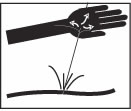
|
Whipping hose:
Pressurized systems can cause serious injury if lines rupture. Hose fittings could become projectiles and the hose could violently whip around. |
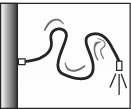
|
Burns from conveyed fluids:
Be cautious of high temperature areas and fluids, as they can easily burn skin. Gloves, safety glasses, or shields are recommended when dealing with hot fluids. |

|
Fire & explosions from conveyed fluid:
Many hydraulic fluids could be flammable in certain environment. Mists or fumes leaking from a pressurized system could be ignited if exposed to an ignition source. |

|
Mechanisms
controlled by
fluid power:
Be aware of systems that support large loads. If a hose/tube fails, objects could fall due to the loss of system pressure. |
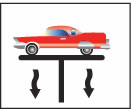
|
System pressures:
Increase in system pressure could cause premature hose/tube and gage failures. Use a transducer to monitor pressure surges, pulses or spikes in the system.
|

|
Temperature:
Infrared guns or thermometer could be used to periodically check fluid or external temperatures. Hose/tube selection should be based on the hose ratings for each application. Use shields to reduce the amount of heat from external sources |

|
Environment:
External environmental conditions could cause hoses/tubes to wear prematurely, such as:
Ultraviolet Light, Salt Water,
Air Pollutants, Temperature,
Ozone Chemical Contact,
Electricity or Abrasion
|

|
Sizing:
Due to the fact that the fluid
in a pressurized system
varies with flow rate and pressure. Always select an adequate size hose/tube for minimum pressure loss. Select hose/tube size based on manufacture specifications and preform calculations to verify that the correct size has been selected. |

|
Hose/tube cleanliness:
When cutting or installing tubes or hoses, ensure they are clean & free from debris prior to installation.
|

|

